Strength of Mishima Kosan 1
Optimization analysis/Design
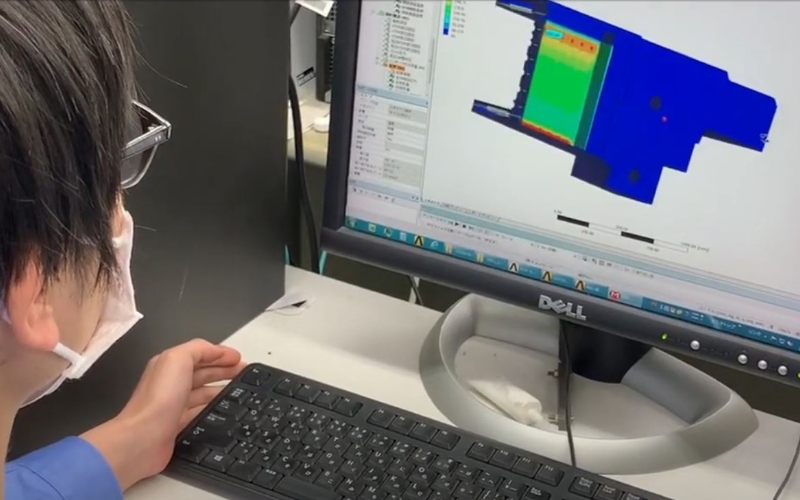
Realize cost reduction by quality improvement and life extension
Optimal cooling structure is achieved through cooling water flow analysis and temperature simulation using a 3D model. We dramatically improve the quality of slabs and contribute to cost reduction through quality improvement and life extension in the steel industry by eliminating operational troubles and improving the quality of slabs for our customers.
Our mold design operation shortens development time, improves product accuracy, and enables product design based on cost tables.
Optimization analysis and design
Point01Analysis: Optimizing mold design by applying FEM analysis method
Point02Diagnosis: Investigate the behavior of existing molds and propose improvement designs
Point01
Analysis:
Optimizing mold design by applying
FEM analysis method
Optimizing mold design by applying
FEM analysis method
We provide optimally designed molds using FEM (Finite Element Method) analysis technology for heat transfer, fluid, shrinkage, stress/deformation,
electromagnetic fields, etc.
1. Optimization analysis of mold inner surface taper
(Heat transfer analysis, shrinkage analysis)
Based on the solidification shrinkage analysis of the slab, we can find the solidification difference of the mold inner surface shape along the shrinkage of the slab and perform uniform cooling with the optimum shape, which improves the quality of the slab and contributes to extending the mold life.
Optimum taper for slab molds : We propose multi-tapering along solidification shrinkage.
| Conventional single taper mold | Multi taper mold | |
|---|---|---|
| Internal tapered shape |  |
 |
 |
 |
2. Optimization analysis of cooling structure
By analyzing the flow of the cooling channel, we examine the cooling capacity such as the optimal channel shape, and propose uniform cooling of the mold surface temperature and optimization of the proper temperature.
Fluid analysis, heat transfer analysis
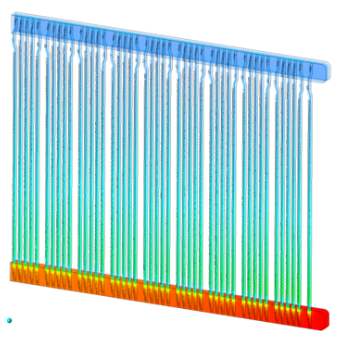
Flow analysis of cooling channels
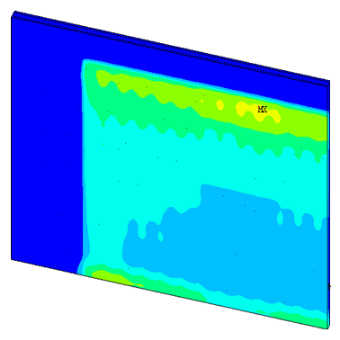
Heat transfer analysis of mold
3. Optimization analysis of mold structure
We propose the optimum structure (strengthening the rigidity of the mold frame) by calculating and predicting the fatigue life by preventing the collapse of the mold taper by strengthening the rigidity of the mold frame and by analyzing the thermoplastic strain of the mold copper plate.
Heat transfer analysis, structural analysis
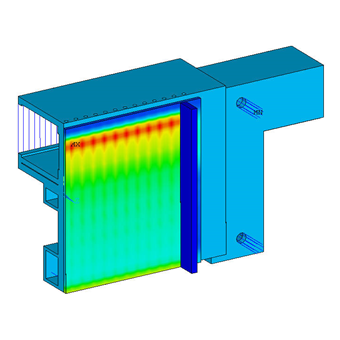
Mold thermal stress analysis
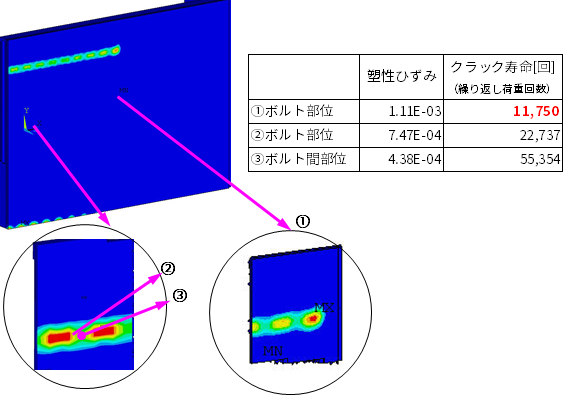
Analysis of mold strain
Case example of improvement through design analysis
The depth of surface thermal damage (cracks) is reduced to about 1/3 of conventional products!
Mold life extension and quality improvement can be realized by optimizing the cooling channel structure through fluid analysis and heat transfer analysis, and predicting the optimal structure through plastic strain distribution calculation and crack life through mold structural analysis (strength study).
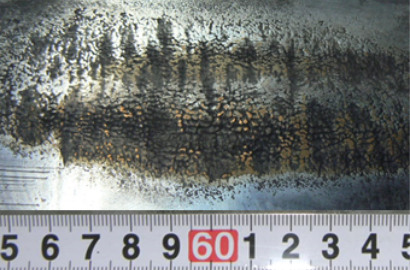
Conventional product
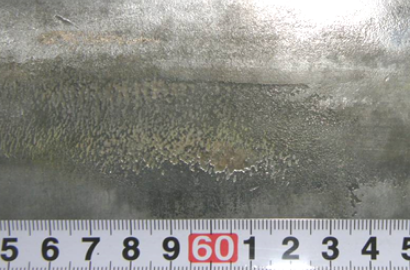
Our optimum design product
4. Mold molten steel stirring analysis
(Thermal fluid analysis, electromagnetic field analysis)
We can help you optimize mold copper plate materials and coating specifications, optimize stirring conditions, extend mold life,
and improve cast piece quality through fluid analysis and electromagnetic field analysis in molten steel.
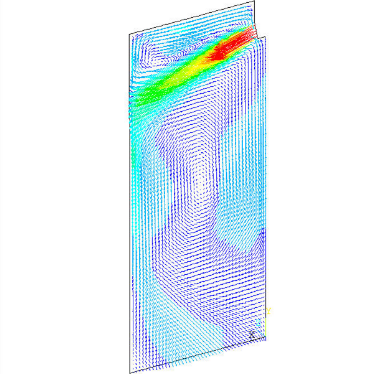
Nozzle discharge velocity distribution chart
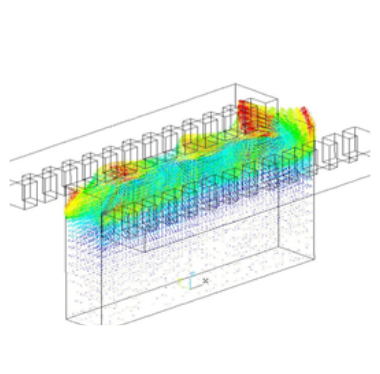
Lorentz force distribution map in molten steel (example of electromagnetic stirring analysis)
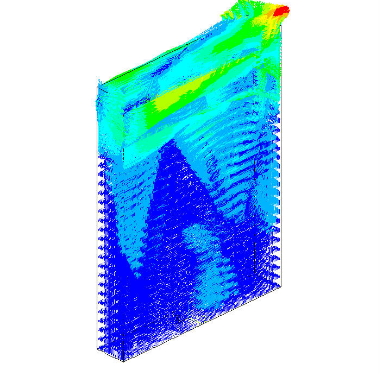
Electromagnetic swirling flow velocity distribution map in molten steel
(example of electromagnetic fluid analysis)
Point02
Diagnose:
Propose behavior studies and
improvement designs
for existing molds
Propose behavior studies and
improvement designs
for existing molds
1. Monitoring/Control system
Thermocouples and laser displacement sensors can be installed in the mold to investigate and monitor behavior during casting.
Mold temperature monitoring system
This system monitors, analyzes, and controls the contact condition between the slab and the mold based on the temperature data from the thermocouples installed in the mold, improving the slab quality and stably producing high-quality slabs.
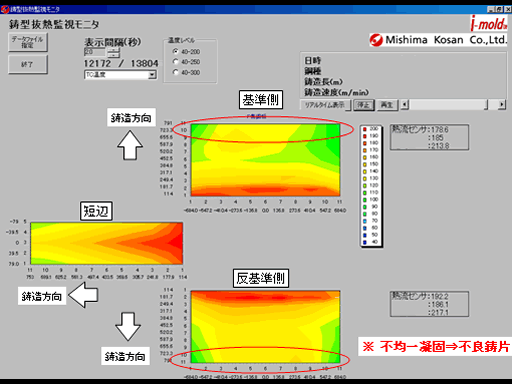
Cast slab solidification
control system
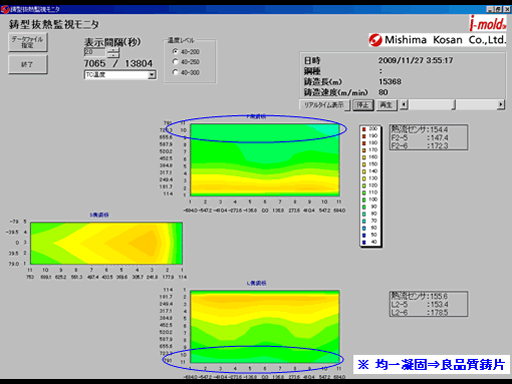
Cast slab solidification
control system
Mold stiffness monitoring system
We evaluate the rigidity of the mold, which greatly affects the slab quality. In addition to examining mold rigidity by FEM analysis, we also investigates and diagnose the rigidity of actual molds by incorporating various sensors such as laser displacement meters into the molds. By applying the improvement designs based on these results to remodeling, updating, and new installations, further quality improvement in casting can be realized.


FEM analysis simulation example of mold for continuous casting
Roll reaction force control system
By monitoring and controlling the reaction force from the slab, surface cracks are suppressed and the shape of the slab is controlled.

Roll reaction force (slab quality/shape) control system
2. FBG system / Multi-thermocouple system
By installing FBG sensors and multiple thermocouples inside the mold, it is possible to measure and monitor the temperature
of the mold with high accuracy.
Point03
Introduction of mold design support system
CAD (Design)
- AutoCad (2D)
- NX Mach3 Product Design/Mold (3D)
- FEM analysis software Ansys
CAM (Manufacturing)
- NX Mach 3 Advanced Machining
- HyperMILL
- Mastercam
Search in detail
Solution / Technical information
 Main facility list
Main facility list
Here is a list of the main facilities we own.

